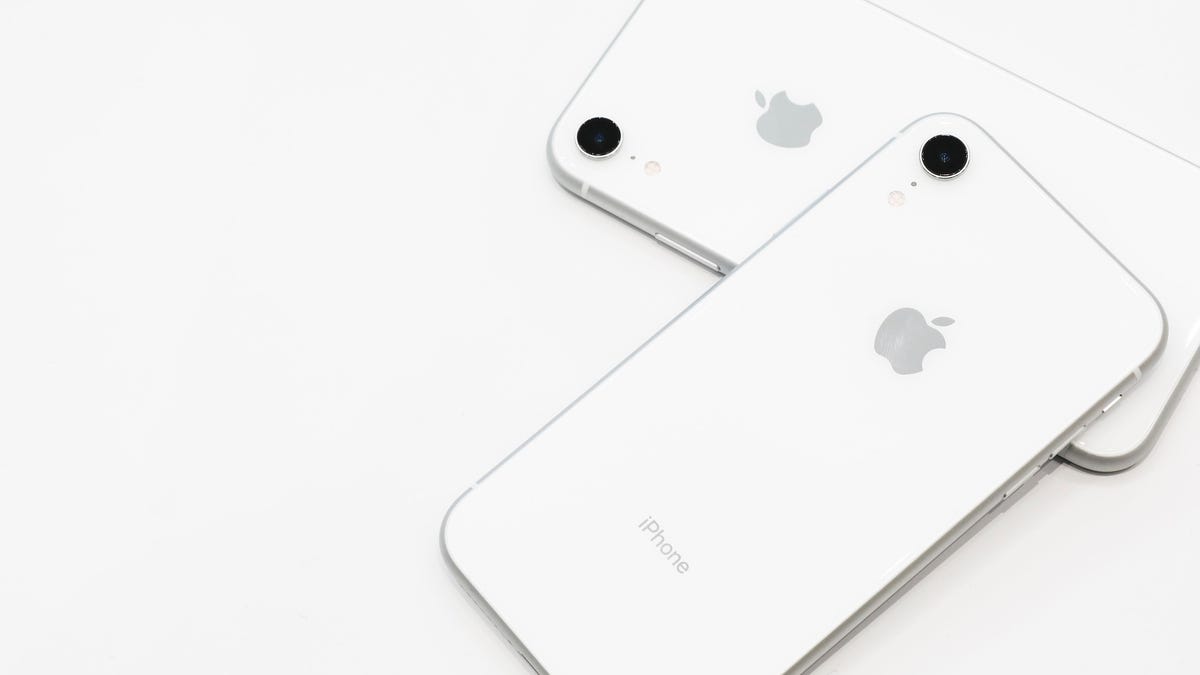iPhone XR camera: Just how good will it be?
It's only got one lens, while the iPhone XS has two. But what else is different?

Our full review of the iPhone XR is here. How does it compare to the iPhone XS and Pixel 3? We answer that and much more in our exhaustive review.
Apple's iPhone XR shares the same wide-angle camera as the iPhone XS and XS Max . But it's cheaper than either of those two phones . If you're deciding between the iPhone XR and iPhone XS (the Max's camera has the exact same specs and features as the regular XS), wondering if there's any difference in the camera, read on.
Read: iPhone camera comparison: iPhone 11 with Deep Fusion vs. iPhone XR
Preorders for the iPhone XR Are open now. CNET's own Bridget Carey went hands-on with the new iPhone XR and all its delightful new colors.
First, here's what we know will be the same:
- Both the iPhone XR and XS have the same 12-megapixel wide-angle camera (26mm at f1.8) with optical image stabilization for photos and videos
- The front-facing 7-megapixel TrueDepth camera at f2.2 with cinematic video stabilization (1080p/720p)
- Videos go up to 4K resolution (24, 30, 60 fps) with stereo recording
- Smart HDR, Apple's new way of processing HDR images
That looks like plenty of common ground. Both phones also share the same computational photography pipeline, using the A12 Bionic chip and the image signal processor.
But the big difference is that the XS and XS Max have an additional 12-megapixel f2.4 camera at the back, which is used for 2x optical zoom. It's also an important part of portrait mode, as that telephoto lens helps create a depth map that determines where your subject is in relation to the background.
To be clear, I have yet to use the iPhone XR and what follows is purely based on my experience with the iPhone XS, Apple's specs for the iPhone XR, my own camera expertise and a healthy degree of speculation.
Portrait mode may have some limitations on the iPhone XR
Without that second telephoto lens, the iPhone XR relies on software and its single rear lens to create portrait mode. Other single-lens phones, such as the Google Pixel 3 , also achieve a similar effect through software and processing.
We won't know for sure until we've tested it, but portraits taken on the iPhone XR may look slightly different from those on the XS.
A portrait taken on the iPhone XS with the background blur set to f/1.4.
Portrait lighting is Apple's name for the effects you can apply to portrait mode photos, either before or after the shot's been taken.
On the iPhone XS and XS Max -- as well as previous iPhones that have portrait mode -- you can choose five different lighting effects: Natural, Studio, Contour, Stage Light and Stage Light Mono. By default, shots are taken with the Natural light effect.
A portrait of a wax figure of Steve McQueen, taken in portrait mode on the iPhone XS with Stage Light Mono.
The iPhone XR's rear camera will only have three of these effects: Natural, Studio and Contour. But you'll still be able to change the bokeh (background blur) using sliders the same way you can on the iPhone XS and XS Max. It lets you adjust the bokeh anywhere between f1.4 to f16, simulating the shallow depth-of-field effect you get from changing the aperture on a DSLR lens.
It doesn't seem like the iPhone XR's portrait mode will work on subjects other than people, as one initial reaction suggested.
Other phones with single-lens cameras can render the bokeh on any subject, not just on people. We won't know for sure if the iPhone XR can do the same until we test out the camera ourselves, however.
This is how you change the depth effect on the iPhone XS.
It's the same selfie camera as the iPhone XS and XS Max
That 7-megapixel TrueDepth camera is shared between the three phones. So it doesn't appear that there will be any surprises here in how the camera renders selfies. You'll still be able to take portrait-mode photos using the front camera. You'll also be able to use all five lighting effects on portrait mode selfies.
And having the TrueDepth camera also means you'll be able to make Animoji and Memoji to your heart's content on the iPhone XR.
The front-facing camera on the iPhone XR.
Zoom is more limited
The iPhone XS and XS Max have 2x optical zoom from the telephoto lens, but also can achieve up to 10x digital zoom. But the XR is limited to 5x digital zoom for still photos. This means you won't be able to get as close, but digital zoom does tend to make images look messy and over-processed the more you increase the magnification.
Videos will also be limited to 3x digital zoom, rather than the 2x optical zoom extending out to 6x digital zoom that's available when recording on the iPhone XS and XS Max.
iPhone XR doesn't have 3D Touch
This means you won't get quick access to launching the camera in different modes if you're used to 3D Touch. By pressing and holding the camera icon on the iPhone XS and XS Max, you can launch the camera instantly in selfie mode, video recording mode, scan a QR code or take a portrait photo.
Once we receive our iPhones, we'll run real-world camera tests to see if there's any other differences between the iPhone XS, XS Max and iPhone XR cameras. Here are more sample photos and details of the differences between the iPhone XS and X cameras.

